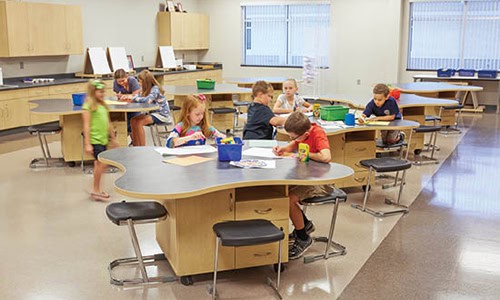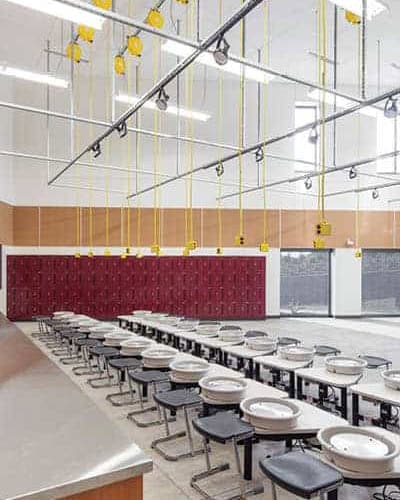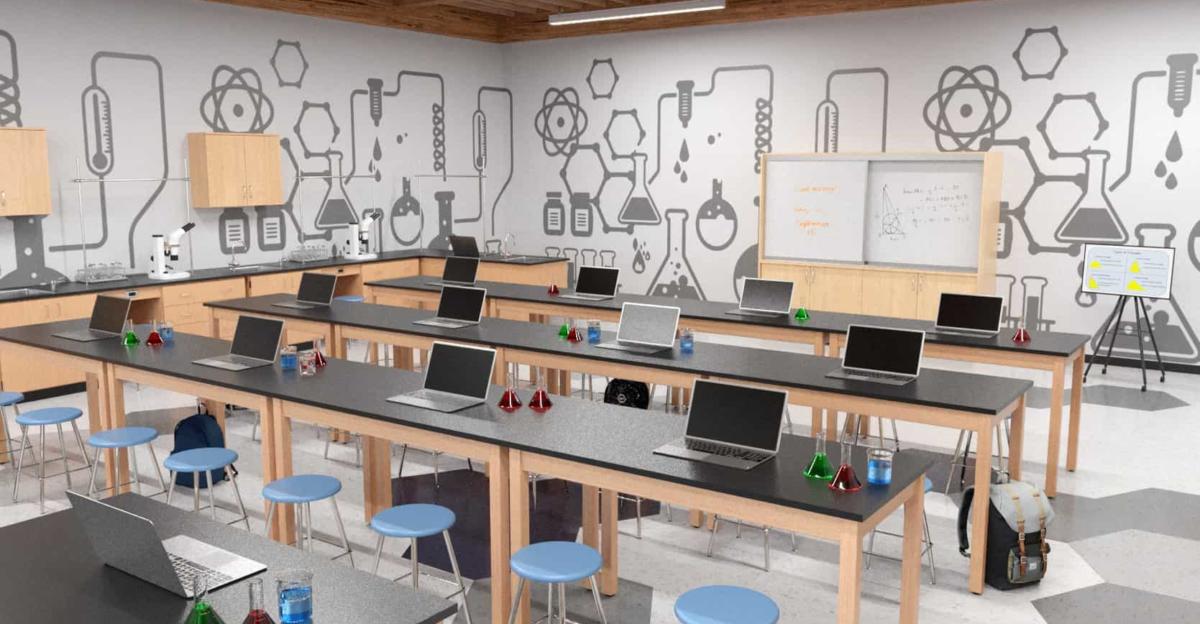When the educational focus in schools shifted heavily towards STEM (Science, Technology, Engineering, and Math) subjects, some educators felt that the approach came at the expense of art. It didn’t take long for STEM to become STEAM (add Art), and schools began designing STEAM labs. These unique learning spaces allow teachers to incorporate a multi-discipline approach that requires creativity alongside critical thinking and problem-solving.

TIME TO ENVISION: Student stations are modular, allowing for the project-based, multimodal learning outcomes that STEAM requires
STEAM learning involves a different concept of what classrooms should look like. In some cases, STEAM is generated from the art program out, with teachers finding ways to tie their curricula to the STEM concepts outside their doors. But to do this effectively, the art room needs to change.
In a STEAM lesson, technology becomes a prominent tool. Elementary students are utilizing simple graphics programs to create art, but STEAM goes much further than that. A typical STEAM project would also require the creation of visual representations of the data generated through an interdisciplinary math or science project. The activity of communicating project data in a creative manner enables better communication to a group.
Graphic artists are not only using technology in their daily lives but often creating technology themselves!
Computer science and programming often finds itself at the crossroads between data and art. Students that can demonstrate computer programming skills to resolve problems as part of a vigorous STEAM curriculum will enjoy a bright future.

Now let’s take a look at what the modern STEAM learning space can look like:
- Technology is made available while it is also easily stowed for hands-on learning opportunities.
- Student stations are modular, allowing for the project-based, multimodal learning outcomes that STEAM requires. Student spaces can be grouped or spread out in the event of a large-scale demonstration. It is possible for students to also work independently if the task allows.
- The days of the flat library cart are over. Movable, flexible demonstration carts not only give options to the upper-grade teacher but also make new hands-on opportunities available to the elementary science instructor and those who need to move from room to room due to budgetary constraints.
- As in any technology-heavy space, a STEAM lab must consider its infrastructure needs. Is there enough power available? Can devices be stowed to protect them from the more creative aspects of a STEAM lesson?
Although fun hands-on activities still abound in these classrooms, a STEAM lab requires technology. Expensive devices are cared for during demonstrations and trials, yet are also readily available for when students need to work with the data gathered and create products from their learning.
Modern education, especially in the STEAM fields, requires a holistic approach that mirrors what the world of college and career will look like for our students. Their learning environments should act as partners in facilitating that level of all-encompassing learning.
Interested in getting help with your project? Contact Projects by Design and talk with a representative!






[…] may seem like a simple selection for a lab, but SchoolSpeciality.com recommends that they allow for a different way of teaching. They think “student stations (should be) modular, allowing for the project-based, multimodal […]